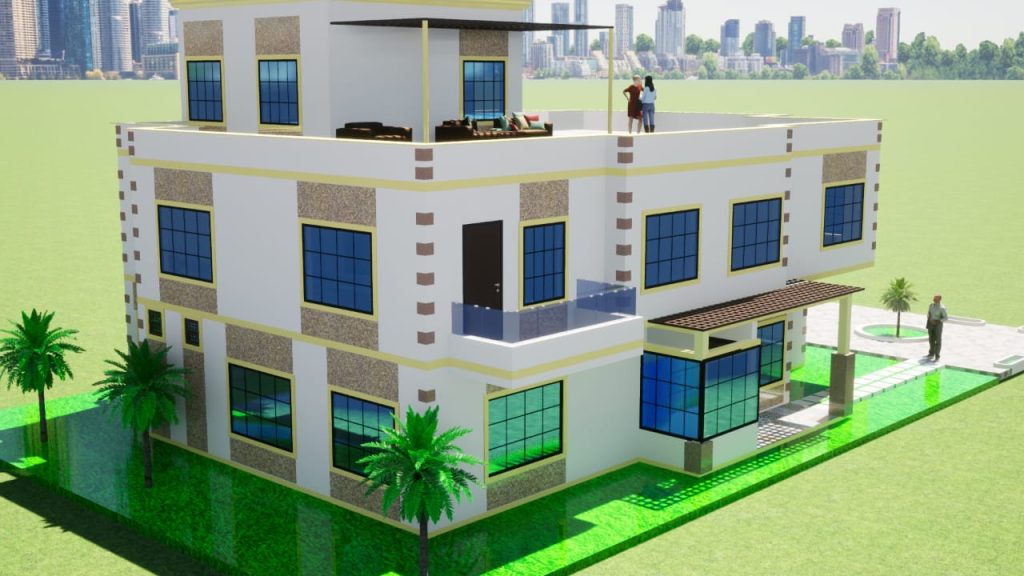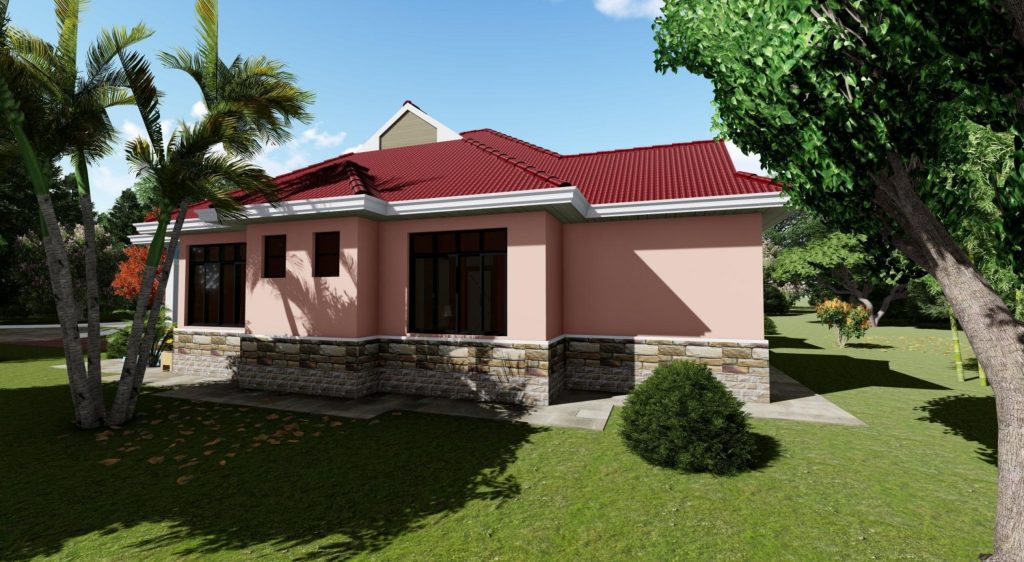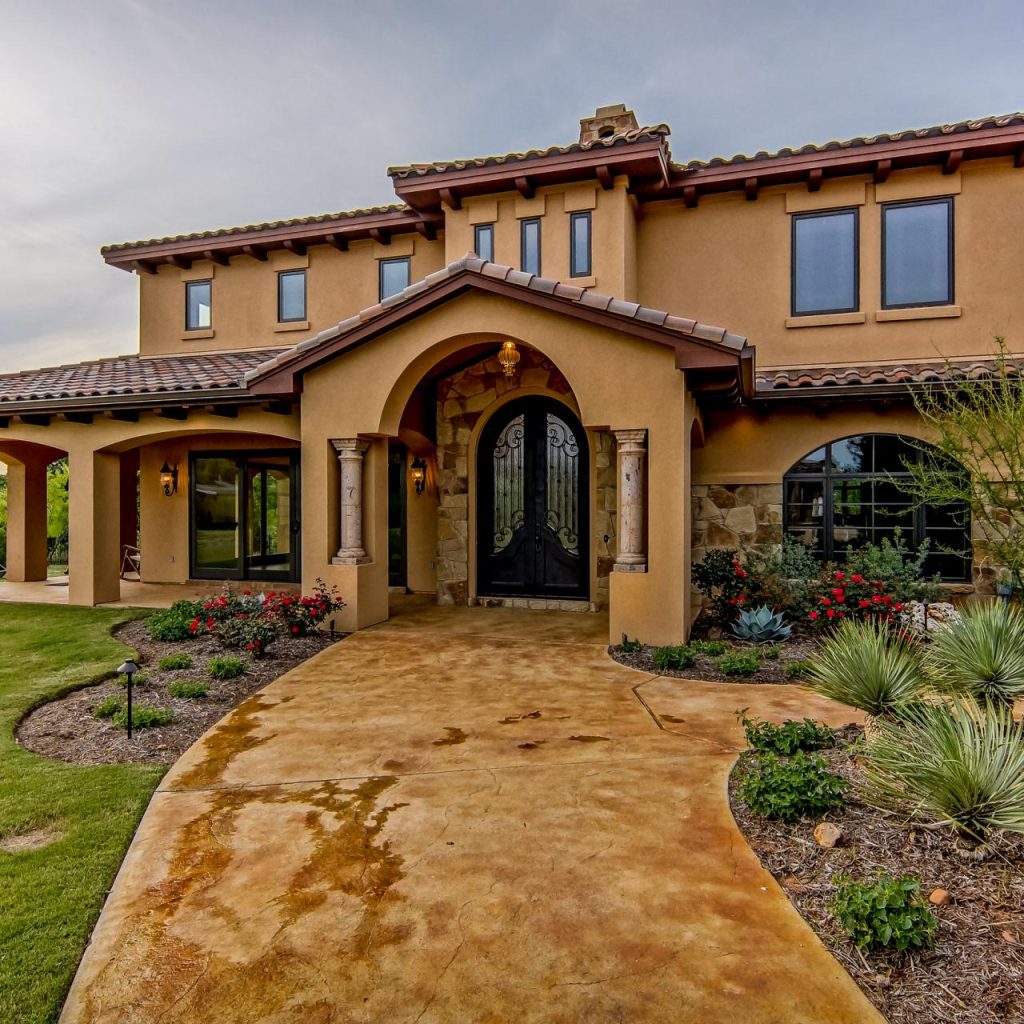When exploring house designs in Kenya, understanding the diverse range of options available can greatly influence your decision-making process. From modern architectural marvels to culturally rich traditional designs, Kenya offers a spectrum of choices tailored to various preferences and needs.
Understanding the Diversity of House Designs in Kenya
In Kenya, house designs reflect a blend of contemporary trends and cultural heritage. You’ll find modern structures characterized by sleek lines, minimalist aesthetics, and innovative use of space. These designs often incorporate materials like steel, glass, and concrete, emphasizing functionality and urban appeal.
Related post: house designs in kenya and cost
Conversely, traditional house designs in Kenya draw inspiration from indigenous architectural styles such as Swahili, Maasai, and Kikuyu influences. These designs typically feature natural materials like thatch, mud, and coral stone, showcasing intricate craftsmanship and a deep connection to local traditions.
Factors Influencing House Design Choices in Kenya
Several factors play a pivotal role in shaping house design choices across Kenya. One of the primary considerations is the geographical location. Urban areas may favour compact, multi-story designs to optimize limited space, while rural settings often embrace expansive layouts that harmonize with the natural landscape.


Budget constraints also heavily influence house design decisions. Cost-effective options that prioritize affordability without compromising on quality are sought after. Understanding your financial limits and exploring financing options can guide you towards a design that fits comfortably within your budgetary framework.
Additionally, cultural and societal preferences impact house designs in Kenya. Preferences for communal spaces, privacy considerations, and adherence to cultural norms all contribute to the final architectural blueprint. By aligning your design choices with these cultural nuances, you ensure a harmonious integration within the local community.
Related Post: House Designs in Kenya
By delving into the diverse array of house designs and understanding the factors driving these choices, you gain valuable insights that empower you to select a design that not only meets your functional requirements but also resonates with your aesthetic and cultural sensibilities in Kenya.
Related post: Why the Design and Build Concept is Ideal for Private Developers
Related post: affordable house designs in kenya
Key Considerations for House Design
When selecting a house design in Kenya, several key considerations can significantly impact your decision-making process. Understanding these factors will help you make informed choices that align with your budget and financial goals.
Budget Considerations When Choosing a House Design
Before diving into house design options, it’s essential to establish a realistic budget that encompasses all aspects of construction. Consider not only the initial building costs but also long-term maintenance expenses. This upfront planning ensures you stay within your financial comfort zone throughout the project.
Cost-effective House Design Options in Kenya
Opting for cost-effective house design options doesn’t mean compromising on quality or aesthetics. In Kenya, you can explore various strategies to minimize costs without sacrificing functionality or style. Look for designs that maximize space efficiency, utilize locally sourced materials, and streamline construction processes to reduce overall expenses.

Financing Options for Building a House in Kenya
Navigating the financial aspects of building a house in Kenya requires careful consideration of available financing options. Whether through traditional mortgages, specialized construction loans, or government-backed schemes, exploring diverse financing avenues helps you secure the necessary funds at favourable terms. Evaluate interest rates, repayment schedules, and eligibility criteria to find the financing solution that best suits your financial situation.
By prioritizing budget considerations, exploring cost-effective design alternatives, and identifying suitable financing options, you empower yourself to make informed decisions that support your vision of building a home in Kenya. These steps not only ensure financial prudence but also pave the way for a successful and sustainable construction project tailored to your needs.
Popular House Designs in Kenya
Kenya boasts a rich architectural heritage that blends modern influences with traditional aesthetics. Understanding the popular house designs in Kenya helps you appreciate the diversity and cultural significance embedded in each structure.
Trends in Modern House Designs
Contemporary Architectural Styles in Kenya
Modern house designs in Kenya often reflect contemporary architectural styles that emphasize sleek lines, open spaces, and functionality. These homes incorporate elements like large windows for natural light, flat roofs, and minimalist interiors. Architects in Kenya are increasingly integrating sustainable materials and energy-efficient features into their designs, catering to both aesthetic and environmental concerns.
Incorporating Traditional Elements in Modern Designs
One notable trend is the fusion of modern architecture with traditional Kenyan elements. This approach blends modern conveniences with cultural authenticity, such as using locally sourced materials like stone and thatch roofing. These designs often incorporate outdoor living spaces and courtyards, reflecting a harmonious blend of tradition and modernity.
Traditional House Designs in Kenya
Swahili Architecture Influences
Swahili architecture, prevalent along the Kenyan coast, showcases distinctive features like intricately carved doors, coral stone walls, and courtyard layouts. These homes are designed to enhance natural ventilation and provide shade from the coastal sun. Modern adaptations of Swahili architecture retain these elements while incorporating contemporary comforts.
Colonial and Post-Colonial Architectural Influences
Kenya’s colonial history has left a lasting imprint on its architecture, particularly evident in homes from the colonial and post-colonial eras. These designs often feature spacious verandas, high ceilings, and large windows to maximize airflow and natural light. Many of these houses have been renovated to meet modern standards while preserving their historical charm.
Understanding these popular house designs in Kenya not only gives us insight into the architectural landscape but also helps in make informed decisions when planning or renovating a property in the region. Whether you prefer the sleek lines of contemporary design or the cultural richness of traditional architecture, Kenya offers a diverse range of options to suit every taste and lifestyle.
Sustainable and Eco-Friendly House Designs
In Kenya, sustainable and eco-friendly house designs are gaining popularity as environmental consciousness grows among homeowners and builders alike. These designs not only minimize the environmental footprint but also enhance energy efficiency and promote healthier living spaces.
Environmental Considerations in House Design
Sustainable Building Materials in Kenya
Choosing the right building materials is crucial for sustainable house design in Kenya. Locally sourced materials such as bamboo, recycled timber, and stone are favoured for their durability and minimal environmental impact. These materials reduce the carbon footprint associated with transportation and contribute to a healthier indoor environment by minimizing the off-gassing of chemicals.
Energy Efficiency in House Designs
Energy-efficient designs play a key role in reducing energy consumption and operational costs. Features like passive solar design, which maximizes natural light and heat, and insulated walls and roofs help regulate indoor temperatures naturally. Additionally, integrating energy-efficient appliances and solar water heating systems further enhances sustainability by reducing reliance on non-renewable energy sources.

Green Building Certifications and Standards in Kenya
LEED Certification in Kenya
Leadership in Energy and Environmental Design (LEED) certification is recognized globally and increasingly sought after in Kenya. It emphasizes sustainable site development, water savings, energy efficiency, materials selection, and indoor environmental quality. Homes designed with LEED principles not only minimize environmental impact but also provide occupants with healthier living environments and lower utility costs.
Eco-friendly Practices and Regulations
Kenya has adopted various eco-friendly practices and regulations to promote sustainable building practices. These include guidelines for water conservation, waste management, and green space preservation. Builders and developers are encouraged to adhere to these standards to mitigate environmental degradation and contribute positively to local communities.
Embracing sustainable and eco-friendly house designs in Kenya is not just a trend but a responsible choice that benefits both homeowners and the environment. Whether you’re renovating an existing property or planning a new construction, incorporating these principles can lead to long-term savings, improved comfort, and a reduced environmental footprint.
Practical Aspects of House Design
When it comes to designing a house, practicality is key. From optimizing space to balancing functionality and aesthetics, every decision you make can significantly impact your daily living experience.
Space Utilization and Floor Plan Considerations
Maximizing Space in a 4 Bedroom House Design
In a 4-bedroom house design, efficient use of space is essential. Consider incorporating multifunctional areas such as a combined living and dining space to maximize open areas. Utilize built-in storage solutions like under-stair storage or floor-to-ceiling cabinets to minimize clutter and maintain a spacious feel. Additionally, the strategic placement of windows and glass doors can enhance natural light and create a sense of openness throughout the house.
Open Floor Plans vs. Compartmentalized Layouts
Choosing between an open floor plan and a compartmentalized layout depends on your lifestyle preferences and the architectural style you prefer. Open floor plans promote a sense of spaciousness and connectivity between different areas, making them ideal for social gatherings and family interaction. On the other hand, compartmentalized layouts offer privacy and defined spaces for specific activities, such as work or relaxation. Balancing these considerations ensures your house design meets both practical needs and personal preferences.
Functional and Aesthetic Interior Design Ideas
Interior Design Trends for Modern Homes in Kenya
Modern homes in Kenya often embrace minimalist design principles, focusing on clean lines, neutral colour palettes, and natural materials like wood and stone. Incorporating elements of Kenyan culture, such as tribal art or traditional textiles, adds a unique touch to contemporary interiors. Sustainable materials and locally crafted furniture pieces are also gaining popularity, reflecting a commitment to both style and environmental consciousness.
Furniture and Decor Selection Tips
When selecting furniture and decor, prioritize functionality without compromising on aesthetics. Pot for versatile pieces that can adapt to different uses and spaces, such as modular sofas or extendable dining tables. Consider incorporating indoor plants to bring a touch of nature indoors and improve air quality. Lighting plays a crucial role in enhancing the ambience; combine overhead lighting with task and accent lighting to create layers of illumination that complement your interior design scheme.
Taking practical aspects into consideration when designing your house ensures that it not only looks good but also functions efficiently to meet your daily needs. By carefully planning space utilization and interior design elements, you can create a home that is both stylish and conducive to a comfortable lifestyle.
Legal and Regulatory Considerations
When planning to build a house in Kenya, navigating the legal and regulatory landscape is essential to ensure compliance and avoid potential setbacks during the construction process.
Building Codes and Regulations in Kenya
Permits and Approvals Required for House Construction
Before starting any construction, you must obtain the necessary permits and approvals from the relevant authorities. This typically includes permits for land use, architectural drawings, environmental impact assessments (if applicable), and structural designs. Adhering to these requirements not only ensures legality but also guarantees that your house is built according to safety standards.
Compliance with National Building Standards
Kenya has established national building standards to regulate construction activities across the country. These standards cover aspects such as structural integrity, fire safety, ventilation, and sanitation. Compliance with these standards is non-negotiable and ensures that your house meets quality benchmarks set by regulatory bodies like the National Construction Authority (NCA).
Legal Considerations When Choosing a House Design
Land Ownership and Title Deed Considerations
Before finalizing your house design, verify the ownership status of the land where you intend to build. Ensure that the title deed is clear and legally registered under your name or the developer’s name if purchasing from a real estate developer. This prevents legal disputes and facilitates a smooth construction process.
Legalities of Customizing House Plans in Kenya
If you plan to customize house plans or modify existing designs, it’s crucial to comply with copyright laws and architectural regulations. Ensure that you have the necessary permissions from the original designer or architect to make alterations. Engaging a licensed architect or architectural firm can help navigate these legalities while ensuring that your customized design meets regulatory standards.
Navigating legal and regulatory considerations when building a house in Kenya requires careful attention to detail and adherence to established procedures. By understanding and complying with building codes, obtaining necessary permits, and ensuring legal clarity regarding land ownership and design modifications, you can proceed with confidence knowing that your project is legally sound and meets all regulatory requirements.
Conclusion
As you explore house design options in Kenya, it’s important to consider various factors to ensure your home meets both your current and future needs.
Choosing the Right House Design for Your Needs
When choosing a house design, think about your lifestyle, family size, and preferences. Whether you opt for a modern, eco-friendly home or a traditionally inspired design, prioritize functionality, comfort, and sustainability. Consider the layout that best suits your daily routines and promotes a sense of well-being. Balancing aesthetics with practicality ensures that your house not only looks great but also functions seamlessly to support your lifestyle.
Future Trends in House Designs in Kenya
Future trends in house designs in Kenya will likely continue focusing on sustainability and innovation. Expect to see more integration of smart home technologies for energy efficiency and convenience.
In conclusion, by considering legal requirements, space utilization, environmental impact, and your personal preferences, you can make informed decisions when designing your dream home in Kenya. Whether you prioritize modern amenities, cultural authenticity, or eco-consciousness, the diversity of house designs available ensures there’s an option that aligns perfectly with your vision and lifestyle.
HOUSE PLANS FOR SALE AVAILABLE {architectural plan, structural plan, bill of quantities(BQ), Mechanical and Electrical plans}:
4bedroom Bungalow Home Design in Kenya
4BR Bungalow Designs with balcony in Kenya
4 Bedroom Flat roof Plan with Garage
5br Bungalow with Outdoor Dining
12 Units Gated Community House Plans in Kenya – 4 Blocks with 2 & 1 Bedroom Units
15 units Mixed Bedsitter and One Bedroom House Plans in Kenya
4BR Best selling Bungalow Design
3Bedroom Bungalow House Plans in Kenya
3-Storey Apartment House Plans Kenya
4-Floor Apartment House Plans Kenya
5-Bedroom Maisonette House Plans in Kenya
4BR Bungalow House Plans in Kenya
4Bedroom Bungalow Designs in Kenya
Affordable 4br Bungalow Designs in Kenya
Best Selling 4 BR Bungalow plans in Kenya
2-Bedroom Maisonette Flat Roof Design with Rooftop Garden
3Bedroom Bungalow Home Plan plus DSQ
5br Bungalow Plan with double volume wall
10 units bedsitter Apartment plan in Kenya
21 units 1br Apartment Plan in Kenya
5br Maisonette Home Plan with basement parking
4BR Miasonette Flat roof Plan in Kenya
Proposed 4Br Maisonette Flat Roof Design in Kenya
4BR Maisonette House Plans Kenya
4-Bedroom Maisonette Flat Roof with Car Garage – Modern Design for Comfortable Living
4BR Maisonette Design in Kenya Flat Roof with rooftop gazebo
4br Maisonette Flat Roof Design
4br Maisonette Home Designs in Kenya
Pingback: House Designs in Kenya - West Kenya Real Estate Shop
Pingback: Popular Architectural Styles for Bungalows • House Designs in Kenya For Sale Shop.
Pingback: Interior Design Trends for Bungalow Houses - West Kenya Real Estate Shop
Pingback: Designing Low-Cost Bedsitter House Plans • House Designs in Kenya For Sale Shop.